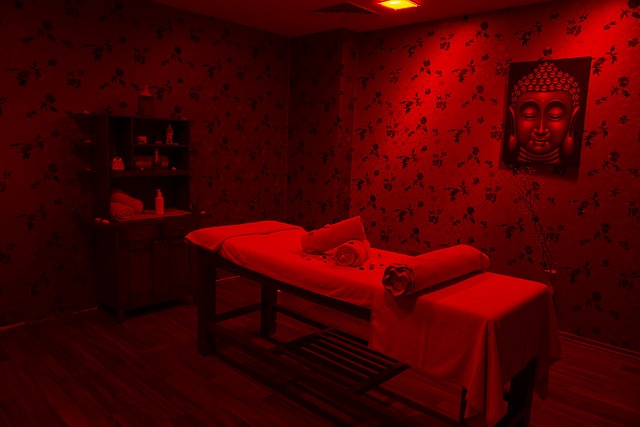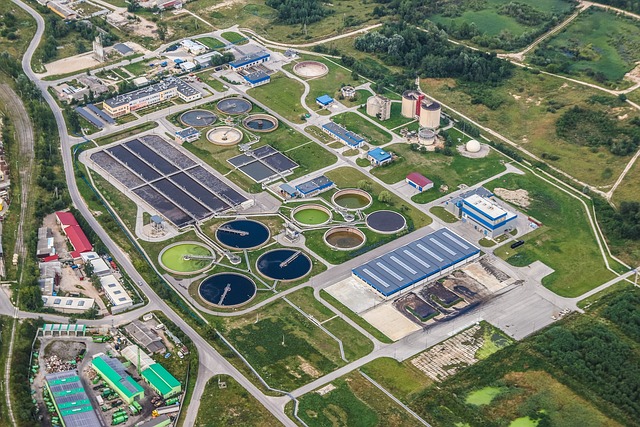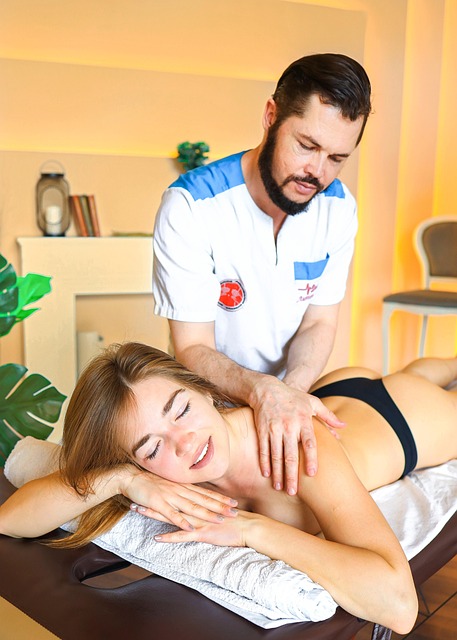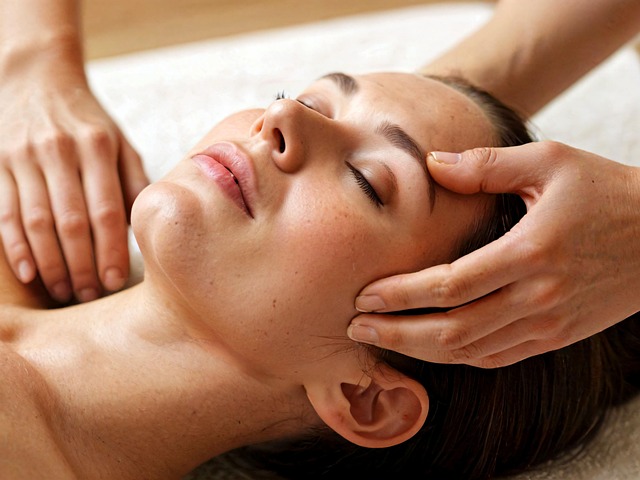Facial wrinkles, categorized as static, dynamic, or expression lines, are addressed through various anti-aging treatments targeting skin structure changes and environmental damage. Key strategies include stimulating collagen synthesis with peptides, antioxidants to protect against free radicals, and topical creams with retinol, peptides, vitamin C, and hyaluronic acid. In-clinic procedures like Botox and laser treatments offer advanced solutions, while non-invasive methods such as chemical peels and microdermabrasion gain popularity for their safety and effectiveness. Adopting a healthy lifestyle and leveraging cutting-edge technology, including AI-driven solutions, contribute to effective anti-aging treatment.
“Uncover the secrets to a smoother, more youthful complexion with our comprehensive guide to wrinkle reduction. Understanding facial wrinkles is the first step; we explore various causes and types to demystify this common concern. Delve into the science behind anti-aging treatments, from topical creams and serums for daily use to advanced in-clinic techniques. Discover non-invasive procedures, popular laser treatments, and lifestyle changes that offer long-lasting results. Stay ahead in the anti-aging industry with our insights into cutting-edge technologies.”
Understanding Facial Wrinkles: Causes and Types

Facial wrinkles are a natural part of aging, but their appearance can be a cause for concern for many. Understanding the causes and types of wrinkles is the first step in exploring effective anti-aging treatments. Wrinkles primarily form due to environmental factors, such as sun exposure, smoking, and facial expressions, which over time lead to changes in the skin’s structure and elasticity.
There are several types of wrinkles, each with its own distinct pattern and cause. These include static wrinkles, dynamic wrinkles, and expression lines. Static wrinkles are permanent and result from loss of collagen or elastin. Dynamic wrinkles form due to muscle contractions during facial expressions, such as smiling or frowning, and can be reduced through specific anti-aging treatments like injections or topical creams. Expression lines, often seen as forehead creases or crow’s feet, are temporary but persistent lines caused by frequent muscle use.
The Science Behind Anti-Aging Treatments

The science behind anti-aging treatments revolves around understanding and countering the natural processes that contribute to skin aging. As we age, our skin undergoes several changes, including a decrease in collagen production, which leads to reduced elasticity and an appearance of fine lines and wrinkles. Anti-aging treatments aim to address these issues at various levels. One key approach is stimulating collagen synthesis through topically applied peptides or growth factors, which signal skin cells to produce more collagen, thereby improving skin texture and reducing the depth of wrinkles.
Additionally, many anti-aging treatments incorporate powerful antioxidants to protect the skin from environmental damage caused by free radicals. These molecules can neutralize harmful substances that accelerate aging by oxidizing cells and breaking down key structural components like hyaluronic acid. By combining these strategies, anti-aging treatments seek to both prevent and reverse signs of aging, offering a comprehensive approach to maintaining youthful-looking skin.
Topical Creams and Serums for Daily Use

Topical creams and serums are essential components of any anti-aging treatment routine, offering a variety of benefits for your skin’s health and appearance. These products are designed to penetrate deeper into the skin, providing targeted care for specific concerns like wrinkles, fine lines, and loss of elasticity. Daily use of high-quality anti-aging creams and serums can help reduce existing wrinkles and prevent new ones from forming.
When choosing topical treatments, look for ingredients such as retinol, peptides, vitamin C, and hyaluronic acid. Retinol stimulates cell turnover, while peptides support collagen production and repair. Vitamin C acts as an antioxidant to protect the skin from environmental damage, and hyaluronic acid hydrates the skin, improving its texture and smoothing out wrinkles. Incorporating these powerful anti-aging ingredients into your daily skincare regimen can help achieve a youthful, radiant complexion.
Professional In-Clinic Wrinkle Reduction Techniques

Professional in-clinic wrinkle reduction techniques offer a range of advanced anti-aging treatments for those seeking youthful skin. One popular method is Botox, which temporarily paralyzes facial muscles, reducing dynamic wrinkles like frown lines and crow’s feet. Another effective approach involves chemical peels, where specialized chemicals are used to exfoliate the top layers of skin, revealing smoother, more even-toned skin beneath.
Laser treatments represent a third powerful option, targeting specific proteins in the skin to stimulate collagen production and improve skin texture. Each technique has its unique benefits, and skilled dermatologists tailor these procedures to individual needs. These professional anti-aging treatments not only provide immediate results but also offer long-lasting improvements in skin appearance and feel.
Non-Invasive Procedures: A Safer Approach

Non-invasive procedures have emerged as a safer and more preferred approach for wrinkle reduction, especially in the sensitive facial area. These treatments offer significant advantages over invasive surgeries, providing effective results with minimal downtime. Techniques such as chemical peels, microdermabrasion, and laser therapy are now widely used to combat signs of aging.
Chemical peels involve applying topical solutions to gently exfoliate the skin, removing damaged layers and encouraging the growth of smoother, younger-looking skin. Microdermabrasion, on the other hand, uses a special instrument with an abrasive surface to gently sand away superficial imperfections. Laser treatments, with their targeted energy beams, stimulate collagen production, improving skin texture and reducing wrinkles. These non-invasive anti-aging treatments are highly effective and increasingly accessible, offering individuals a more moderate path towards achieving a youthful complexion.
Popular Laser Treatments for Face Rejuvenation

Popular Laser Treatments for Face Rejuvenation
In the quest for youthful skin, laser treatments have emerged as a leading anti-aging solution. These advanced procedures offer a non-invasive approach to tackle various signs of aging, including wrinkles and fine lines. One of the most sought-after options is the use of fractional lasers, which stimulate collagen production while improving skin texture and elasticity. This technology sends precise beams of light into the deeper layers of the skin, encouraging cellular repair and rejuvenation.
Another popular choice is the CO2 laser resurfacing procedure, known for its ability to resurface and reshape the face. By removing outer layers of damaged skin, it reveals smoother, more even-toned skin beneath. This technique is particularly effective for deep wrinkles and scars, providing significant anti-aging benefits. With continued advancements in laser technology, these treatments offer safe and effective ways to achieve a more youthful and radiant complexion.
Lifestyle Changes for Long-Lasting Results

Adopting a healthy lifestyle is an essential component of any anti-aging treatment regimen, especially when it comes to achieving long-lasting wrinkle reduction. Simple yet effective changes can significantly impact your skin’s health and appearance. For instance, staying hydrated by drinking ample water promotes skin elasticity and a more youthful glow. A balanced diet rich in antioxidants, vitamins, and minerals supports collagen production, which is crucial for maintaining smooth, supple skin.
Regular exercise not only benefits your overall health but also boosts blood circulation, enhancing nutrient delivery to the skin. This can contribute to a more even skin tone and reduce the appearance of fine lines and wrinkles. Additionally, managing stress levels through relaxation techniques like meditation or yoga can have profound effects on your skin’s health. Stress is often linked to accelerated aging, so finding ways to relax and unwind could be a powerful tool in your anti-aging arsenal.
Advanced Technologies in Anti-Aging Industry

The anti-aging industry is a realm where innovation and technology intertwine, offering promising solutions for wrinkle reduction and skin rejuvenation. Advanced technologies have emerged as game changers in the quest for youthful-looking skin. One of the most prominent developments is the introduction of novel non-invasive procedures. These treatments utilize cutting-edge tools such as lasers, radiofrequency, and ultrasound to stimulate collagen production and enhance skin elasticity without incisions or recovery time. For instance, fractional laser therapy has gained popularity due to its ability to target specific areas of concern, promoting a more robust and uniform skin texture.
Moreover, the field of dermatology has embraced digital solutions, incorporating advanced imaging techniques and artificial intelligence (AI) for precise anti-aging treatment planning. AI algorithms can analyze facial features, identify age-related changes, and suggest personalized care routines or specific procedures like Botox injections or chemical peels. These technologies ensure more effective and tailored anti-aging treatments, addressing individual skin concerns for optimal results.
